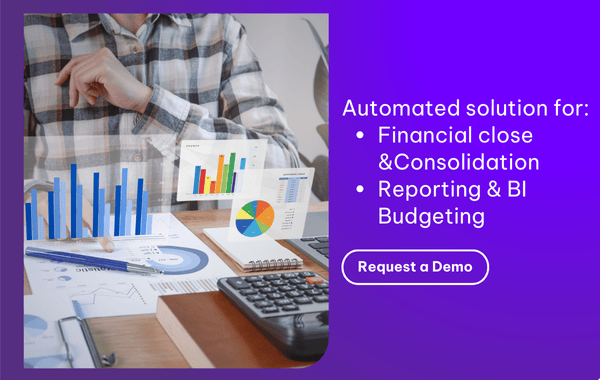Jack Welch, former Chairman at GE once said: “The budgeting process…sucks the energy, time, fun, and big dream out of an organization”. Yes, everyone hates it! If there is an effective way to do it without trying too hard will you take its advantages to grow? What you need is just a good planning and budgeting process and the right technology!

Contents
- The current state of planning and budgeting
- Have your own planning and budgeting process
- Technology can help
The current state of planning and budgeting
Planning and budgeting is time-consuming. Some take around 6 months to complete and normally end up with irrelevant or unusable data by the time the plan is executed. In a recent survey by PwC, over 70% of responding organisations take over 2 months to complete their planning and budgeting process. The process in larger enterprises can take up to a year.
Furthermore, forecasting accuracy is also a pain since almost all of these organisations struggle with the forecasting process, with only 10% confident that the actual performance difference is about +/-2 from the forecasts.
Due to the complexity of this process, people tend to skip creating a throughout budgeting process. This step is extremely important as it is the only way that tell you what you have at hand and what you have to do in order to set up groundwork for a successful and efficient strategy.
Read more: How has Dana-Farber shortened their budget cycle by 40 per cent?
Have your own planning and budgeting process
One of the best practices is having your own process and sticking to the following steps:
1. Timeline
Spread project budget across the scheduled activities and across time and time-phased allocation of resources is critical to the process. Make sure you don’t miss any activities as it affects your cost estimation. This step gives an overview of your overall plan which allows you to make suitable adjustments and help your plan to be on track.
2. Objectives
Keep in mind that objectives should be results-oriented rather than activity-oriented and your objectives should be measurable and achievable. Be careful with this step as it can drive your initial plan into another direction.
3. Resources
Understand your business situation, and get your hands on controlling your finances, make sure funds are sufficient for current commitments and future projects. All resources should be aligned with your company’s objectives.
Read more: The main purposes of traditional budgeting
4. KPIs
The Key Performance Indicators give an understanding of business performance in relation to its goals and objectives. They enable you to identify what you are doing best and what you are not. In addition, you can clarify the reasons behind it with clear evidence. Different industries require different sorts of KPIs, so choose the KPIs that are most suitable for your business.
5. Risks & Challenges
Take into account potential risks and challenges. Risk management considers the possible outcome of future events and helps to identify actions that need to be taken in order to prevent extra costs.
Budgeting strategies require financial managers’ hours of working and effort to collect data from a variety of sources in order to come up with a sound and achievable budget. And it is where problems come from, right?
As a professional financial manager, what do you wish to know from your data, and what parts of it do you want to improve most?
Three elements that financial professionals want to change most:
- The time it takes to collect data
- Data gathering tools
- The process by which data is collected
Read more: The role of budgeting in corporate performance management
As a common practice, many businesses use Excel for planning and budgeting. However, it is inefficient and error-prone because it is a complex procedure that requires a huge amount of time to input, review, check, audit, correct, and submit budget data.
This type of spreadsheet only offers you a fragmented view of each individual aspect of your business. For instance, when you need to assess profitability by costs of goods sold, customer demographics, region, types of products and so on; your current spreadsheets cannot perform these types of requirements. Also, when one aspect is changed, you barely see its impact on other items.
Read more: 7 Worst Financial Fiascos caused by Excel errors
Technology can help
With the support of innovative technology solutions which are designed to make the planning and budgeting process less stressful, you will be able to:
- Reduce time to collect and consolidate data.
- Use embedded tools to analyse information.
- Improve the speed of your budgeting and planning process.
- Reduce budgeting and forecasting cycle times.
- Understand the insights of your organization's performance.
- Generate integrated reports.
- Use data like a statistic expert.
- Make better business decisions.
Read more: A Simple Guide to Enterprise Performance Management (EPM)
Technology can help financial planning and budgeting support the execution of strategic initiatives by connecting the link between budget strategies to organisational plans and strategies which increase the accuracy of financial forecasts and consolidate financial planning processes for better performance.
A relevant performance management solution, which includes planning, budgeting and forecasting capabilities, can support CFOs in building a planning process that links with other line managers and as a result, helps increase accuracy and business insight.
This technological approach has brought fruitful results to organisations who applied it, according to an Aberdeen research report in 2012. These organisations have achieved a 23% shorter time in their decision-making process, are 54% more likely to update plans and forecasts on a monthly basis and have improved 3% in operating margin compared to others.
In a real-life example, a medical centre successfully implemented a cloud-based enterprise performance management (EPM) system, resulting in a remarkable reduction in their budgeting process time. They were able to streamline the process from the typical duration of 4-6 months down to an impressive 4-6 weeks. This significant time savings allowed the medical centre to focus more efficiently on their financial planning and make informed decisions for better performance.
In another survey conducted by Accenture, CFOs have been proactive in implementing digital technologies within their finance functions over the past two years. In fact, the survey found that 60% of traditional finance tasks are now automated, a significant increase from 34% in 2018.
This automation has led to tactical benefits such as cost efficiencies and improved accuracy in historical reporting. These advancements have provided CFOs with more than just a basic understanding of data-driven transformation. In fact, the survey revealed that 72% of CFOs now have the final say in determining the appropriate technology direction for their enterprises.
However, despite the widespread adoption of digital technologies, the survey also found that only 23% of CFOs are utilising the cloud to gain new insights, and just 16% are using the cloud to identify new sources of value. This represents a missed opportunity for CFOs to leverage the full potential of cloud technology in their planning and budgeting processes.
Read more: Step-by-step guide to budget and strategy alignment
However, technology by itself cannot cover all the above, but it needs a harmonious combination of both CFOs – who play the strategist and controller, and performance management solutions – who play as a supporter and information provider in the process.
The key to achieving these results is the implementation and maintenance of these solutions to support the planning and budgeting process, specifically:
- Developing a collaborated planning and budgeting process to provide the foundation to reduce the planning lead time and increase forecasting accuracy.
- Building plans from both top-down and bottom-up to increase accuracy as well as attract more stakeholders.
- Connecting planning and budgeting processes to all activities to attract more stakeholders and ultimately, add strategic values and reflect the nature of the business.
Conclusion
A best-in-class Planning and Budgeting solution makes it easier to control access to information needed to boost the planning and budgeting process anytime and anywhere. It enables stakeholders, executives, and financial managers to access and make better decisions based on well-informed information.
It is time to move on with the latest technologies that enable you to understand every aspect of your business with quality information and empower you to become an expert in decision-making.
 English
English  Vietnamese
Vietnamese 


.png?width=100&height=100&name=Rick-profile-photo-2018-circle-260x260px%20(1).png)
